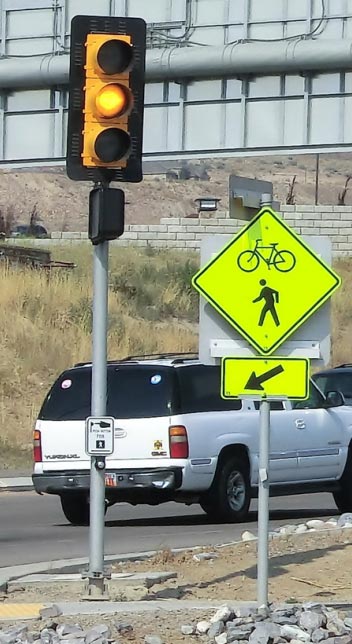U.S. Department of Transportation
Federal Highway Administration
1200 New Jersey Avenue, SE
Washington, DC 20590
202-366-4000
At a signalized intersection, the yellow change interval is the length of time that the yellow signal indication is displayed following a green signal indication. The yellow signal confirms to motorists that the green has ended and that a red will soon follow.

Appropriately timed yellow change intervals can reduce red-light running and improve overall intersection safety.
Source: FHWA
Since red-light running is a leading cause of severe crashes at signalized intersections, it is imperative that the yellow change interval be appropriately timed. Too brief an interval may result in drivers being unable to stop safely and cause unintentional red-light running. Too long of an interval may result in drivers treating the yellow as an extension of the green phase and invite intentional red-light running. Factors such as the speed of approaching and turning vehicles, driver perception-reaction time, vehicle deceleration, and intersection geometry should all be considered in the timing calculation.
Transportation agencies can improve signalized intersection safety and reduce red-light running by reviewing and updating their traffic signal timing policies and procedures concerning the yellow change interval. Agencies should institute regular evaluation and adjustment protocols for existing traffic signal timing. Refer to the Manual on Uniform Traffic Control Devices for basic requirements and further recommendations about yellow change interval timing. As part of strategic signal system modernization and updates, incorporating automated traffic signal performance measures (ATSPMs) is a proven approach to improve on traditional retiming processes. ATSPMs provide continuous performance monitoring capability and the ability to modify timing based on actual performance, without requiring expensive modeling or data collection.1
Sources
1. FHWA ”Automated Traffic Signal Performance,“ (2020).
2. NCHRP Report 731: Guidelines for Timing Yellow and All-Red Intervals at Signalized Intersections, (2011).
Filter countermeasures by focus area, crash type, problem identified, and area type.
